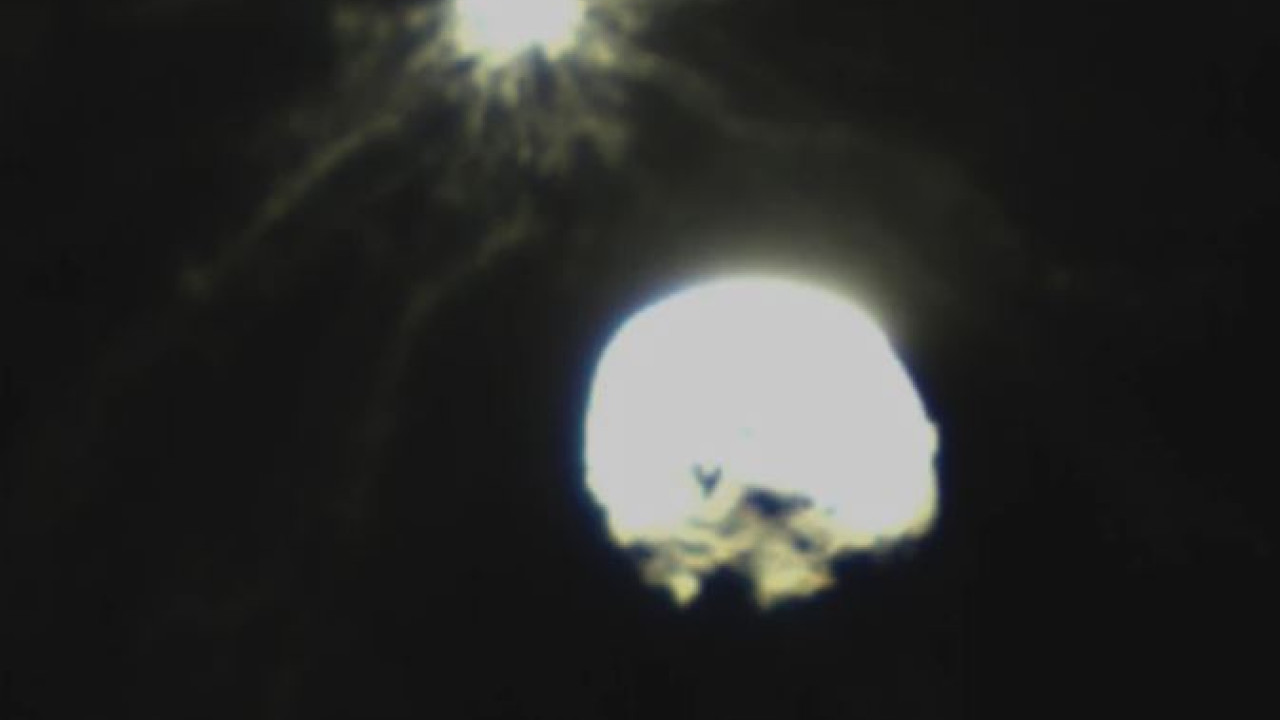
The Kamikaze spacecraft, slightly smaller than the car, crashed at over 20,000 kilometers per hour on the asteroid
NASA has released some of the first shots showing the asteroid impact experiment with the image after it hit the Double Asteroid Redirect (DART) Dimorph spacecraft.
NASA’s spacecraft deliberately collided with asteroids to change course with the force of kinetic energy, during an unprecedented mission to help humanity learn how to protect itself from a potential existential crisis in the future.
The Kamikaze spacecraft, slightly smaller than the one, fell at a speed of more than 20 thousand kilometers per hour on the asteroid, at the expected time (at 02:14 Greek time, early Tuesday, September 27, 2022).
NASA teams at Mission Control Center in Maryland erupted in cheers at the time of the collision.
A few minutes earlier, the asteroid Demorphos, about 11 million kilometers from Earth, began to slowly grow in stunning images transmitted directly from the spacecraft’s camera. The irregular gray surface of the rocks was clearly visible.
The first picture from the moment of the explosion:
The rocket’s impact on the asteroids was successful, and even went better than expected, as Cleomenes Tejanis summed up in his talk to SKAI, Professor of Dynamic Astronomy and Research Team Member Dual Asteroid Redirection (DART) spacecraft
“It’s the first planetary defense experiment, but if we look at it in a bit more historical depth, it’s the first time in human history that a celestial body has changed its course with human intervention. This is certainly unprecedented.” Specifically indicated.
As Mr Tijanis explained, the course change has yet to be confirmed with certainty, but the first images and the first data show that the experience may have been better than expected.
He pointed out in particular that there are still some images and some data that are being processed and therefore have not been announced, but in any case it seems that the experiment succeeded as the asteroid was hit hard.
“There’s a big change in brightness, and there are debris trails that have come a long way,” he explained, adding that within the next few days we will see very cool photos some of which have already been released on Twitter.
A similar experience, he explained, had not been tried before in terms of the degree of difficulty he characteristically said “I will tell you the numbers and you will think about it … The requirement was that the target be 10-15 meters accurate when the object we are currently targeting is about 11 million kilometers from Earth and is It’s 160 meters wide. You understand we’re talking about a billionth, which is how accurate it is.” He said characteristically and added that this is possible by starting the mission a year ago and only making corrective moves along the way.
It is worth noting that the professor mentioned that during the last hours of the mission there was no longer any human intervention and the navigation was carried out through an intelligent automated navigation system that relies on the boat’s camera itself.
“Everything is working as expected, as I said, the target was exactly where it should be,” he emphasized among other things.
source: skai.gr
Read them today’s news And get the latest news.
Follow Skai.gr on Google News and be the first to know all the news.

“Total alcohol fanatic. Coffee junkie. Amateur twitter evangelist. Wannabe zombie enthusiast.”






More Stories
Is this what the PS5 Pro will look like? (Image)
Finally, Windows 11 24H2 update significantly boosts AMD Ryzen – Windows 11 performance
Heart Surgeon Reveals The 4 Things He ‘Totally Avoids’ In His Life